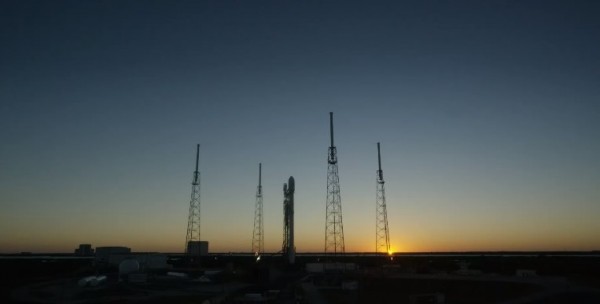By Ana Verayo, | February 29, 2016

SpaceX's latest attempt to launch its Falcon 9 rocket has been scrubbed thrice in a row.
SpaceX cancelled its launch for the third time in a row since Wednesday last week. The private space company is scheduled to launch a satellite but its nine main engines choked as the Falcon 9 rocket ignited during launch Sunday evening. A low thrust alarm then triggered a computer automated shutdown that ended this third attempt to also complete a vertical rocket landing on a droneship.
Like Us on Facebook
SpaceX is also four days delayed in launching an SES communications satellite in lower orbit over Asia, due to propellant issues regarding temperature maintenance that also caused the previous rocket delays last Wednesday and Thursday. Last Sunday evening, it was already to T minus one minute and 33 seconds when the launch was suddenly stopped due to a wayward ship entering launch danger zone.
When the off shore ship issue was solved, the launch continued from the original 6:47 P.M. EST launch and was moved to 7:21 P.M. When the countdown reached zero, the engines fired away, its fiery exhaust blasting but immediately shut down. After this unexpected event, engineers were quick to put the spacecraft into safe mode, as they depressurized the propellant tanks, ensuring that the rocket was still in stable setup.
Mission managers and scientists managed to troubleshoot for a few minutes before making another launch try within the 94 minute launch window, however, it was ultimately decided that the flight is scrubbed for the day for further analysis.
According to SpaceX founder Elon Musk, launch aborted on low thrust alarm, from a tweet after moments of the engine shutdown. He adds, rising oxygen temperatures occurred due to hold, waiting for boat, as a helium bubble formed and triggered the alarm.
For this newest version of the Falcon 9 rocket, oxygen temperatures are critical where this second booster version of SpaceX now requires super cooled propellants to allow the rocket to carry more RP-1 fuel and liquid oxygen as fuel.
SpaceX's first attempt to land a booster rocket was successful last December, as this new upgraded one aims complete this satellite mission and to land its Falcon 9 rocket on a floating ocean barge or a drone ship off the coast of Florida. More importantly, SpaceX wants to reuse and recycle its rockets for space launches to cut expensive launch costs that amount to millions of dollars.
The launch attempt for the SES-9 satellite on Wednesday was scrubbed before fueling even began due to liquid oxygen temperature issues, following another one the next day due to propellant loading.
-
Use of Coronavirus Pandemic Drones Raises Privacy Concerns: Drones Spread Fear, Local Officials Say

-
Coronavirus Hampers The Delivery Of Lockheed Martin F-35 Stealth Fighters For 2020

-
Instagram Speeds Up Plans to Add Account Memorialization Feature Due to COVID-19 Deaths

-
NASA: Perseverance Plans to Bring 'Mars Rock' to Earth in 2031

-
600 Dead And 3,000 In The Hospital as Iranians Believed Drinking High-Concentrations of Alcohol Can Cure The Coronavirus

-
600 Dead And 3,000 In The Hospital as Iranians Believed Drinking High-Concentrations of Alcohol Can Cure The Coronavirus

-
COVID-19: Doctors, Nurses Use Virtual Reality to Learn New Skills in Treating Coronavirus Patients







